#impatiens pallida
Text

Yellow jewelweed, Impatiens pallida, with a developing seed pod.
212 notes
·
View notes
Photo




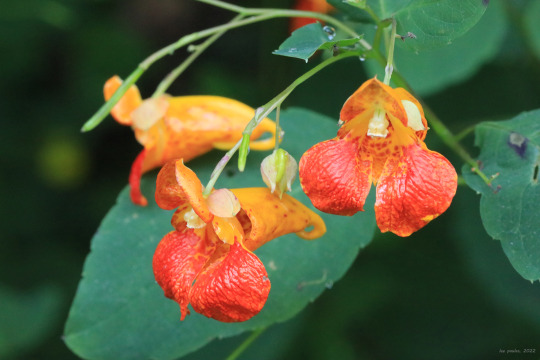
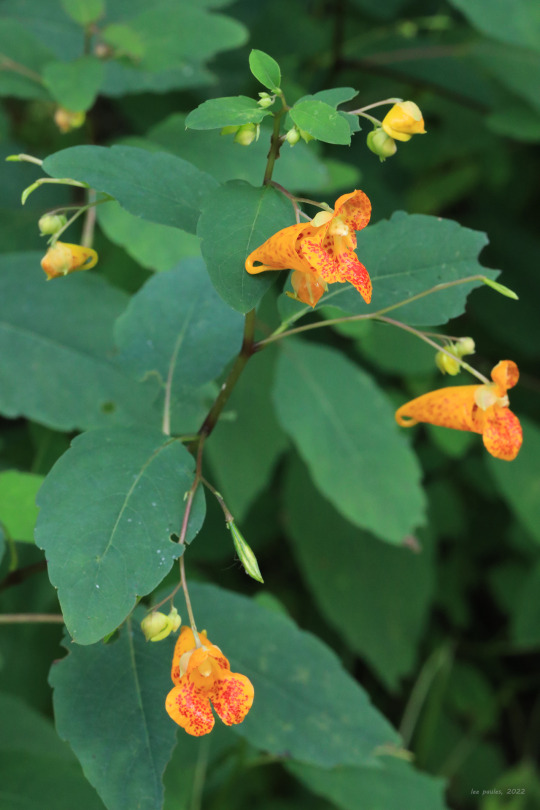
“Woodlot vagrant and trashy saint,
my love for you through decades grows,
Mortal skin rubbed with voodoo juice
Wards off ivy poison and chigger foes.
And from those fragile pods I pinch
a coiled-up confetti erupts,
Ah, those mundane seconds
of summer snooze
your joyful trick disrupts!
With fiery orange and yellow lips
Thirsty fliers you long seduce.
Delivered on frantic wings,
They burrow fast and draw deep sips.
Such a divine delirium
Your subtle perfume and nectar sow,
A succulent secret
Only you, me, and the bumblebee know."
Thus concludes another edition of my bad nature poetry, this time in honor of two of Appalachia’s most-beloved summer jewels (Impatiens pallida and I. capensis).
#appalachia#vandalia#west virginia#late summer#flora#wildflowers#impatiens capensis#orange jewelweed#orange balsam#spotted jewelweed#spotted touch-me-not#impatiens pallida#yellow jewelweed
69 notes
·
View notes
Photo
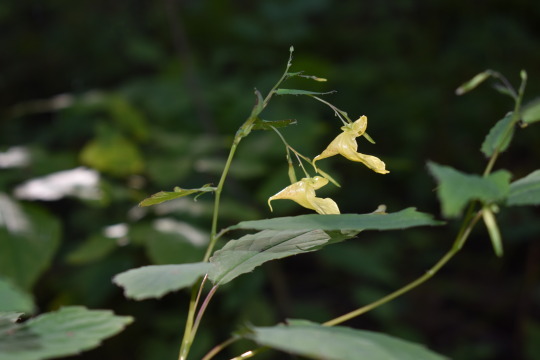

Pale Jewelweed
Impatiens pallida
Balsaminaceae
Photographs taken on September 30, 2022, at Scenic Caves Nature Adventures, The Blue Mountains, Ontario, Canada.
#wildflowers of southern ontario#Pale Jewelweed#Jewelweed#pale touch me not#touch me not#touch-me-not#pale touch-me-not#Impatiens pallida#Balsaminaceae#Scenic Caves Nature Adventures#Scenic Caves#The Blue Mountains#Blue Mountains#Ontario#Canada#nature#yellow
17 notes
·
View notes
Text

Pale Jewelweed
Impatiens pallida
Native to much of eastern North America, pale jewelweed prefers wet soils in bottomland forests, along streams, etc... Jewelweed is also an old remedy for poison ivy rashes. Hummingbirds love the flowers as well. The pictured plants were growing en masse in a bottomland forest next to the Big River.
Sept. 1st, 2021
Washington County, Missouri, USA
Olivia R. Myers
@oliviarosaline
#botany#jewelweed#jewel weed#native flowers#native plants#the ozarks#ozarks#Missouri#Missouri nature#yellow jewelweed#yellow#yellow flowers#bottomland woods#nature#forest#forest floor#woods#forests#cottagecore#fairycore#fairy core#fairy flowers#naturecore#exploring the woods#hummingbird flowers#wild flowers#wildflowers#plants#impatiens#Balsaminaceae
25 notes
·
View notes
Photo
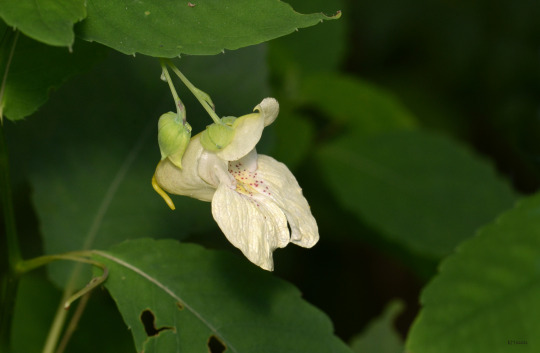
Pale Jewelweed
Contrary to the surrounding Pale Jewelweed flowers, this lone plant displayed a white flower. As a common plant, Impatiens pallida, I have seen countless yellow flowers, yet this was the first time I found one that was white.
49 notes
·
View notes
Photo
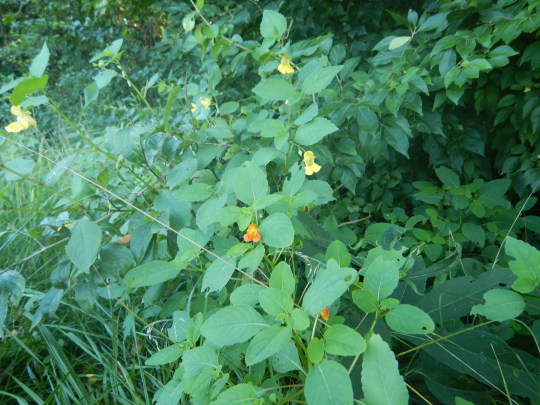


Impatiens capensis
Impatiens pallida
in sympatry, both annuals, both called jewelweed or touchmeknot depending on if your more interested in the turgor pressure violent dehescent sticky seed combo or if your more hungry for waxy cuticle and plastid spacing.
Here we can look at the differenses in leaf shape with pointier tips(terminating to sharp narrow points aka acuminate) on our yellow friend and blunt less toothed leaves( crenate= rounded margins where dentate= pointed margins) on our red pal. both flowers are also pollinated by different things more often then similar pollination vectors. Red flowers with recurved or long nectar spurs tend to be pollinated by humming birds or by butterflies where as our yellow friend has much larger carolla tubes on average, nectar guides in the throat that are only apparent to humans in F. speciosa(cream speckled white form) are associated with Bombus spp. in pollination overall; with this said it doesn’t mean that there isn’t an overlap.
53 notes
·
View notes
Photo



A soft September wind rolls through the meadow
As crimson spangled boughs shudder with the motion of it
// Part 10
375 notes
·
View notes
Text

#impatiens pallida#jewelweed#yellow jewelweed#wildflowers#just saw a large patch of them this evening!!
1 note
·
View note
Text
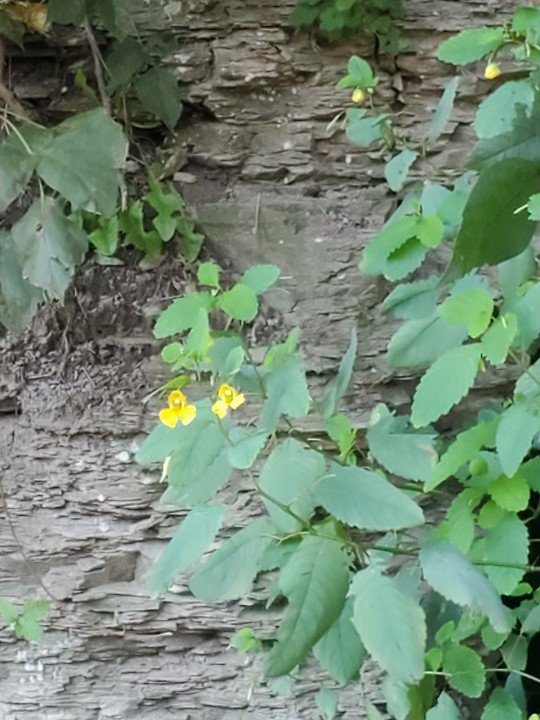
9/18/21
0 notes
Photo


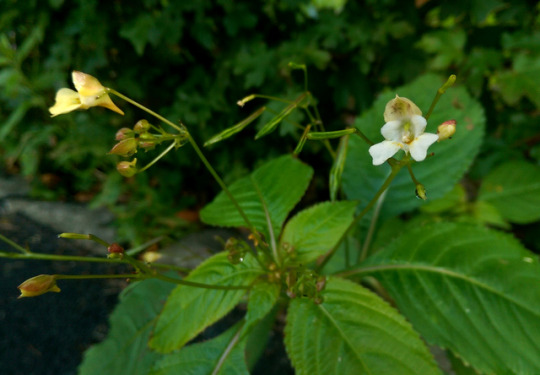
Impatiens pallida, Balsaminaceae
If you have never seen this plant you might recognise it for a relative of the Himalayan balsam (Impatiens glandulifera) I described a few days ago, but if you live in central-eastern North America you are probably more familiar with the native yellow jewelweed than I am. Overall they look fairly similar, but the latter doesn’t grow nearly as large or aggressively and I have found no indication or record of its presence in the wild here in Scotland. I was actually quite surprised when I first saw a couple of plants growing a bit stunted under an hedge at Glasgow Botanic Gardens and then a few more along a non-cultivated path and I obviously had to investigate. My guess was this species had been part of the collection at some point in the past and was still popping up as a weed here and there, but the former curator told me it was never grown intentionally to his memory. My guess might still be valid, it must mean it was part of the collection at least over 20 years ago, as there’s no other explanation for its restricted presence there and total absence outside of the Gardens.
While I was at it I also asked about the other, much showier, North American native, the orange jewelweed (I. capensis), but that has never been grown there either. It was actually introduced to the British Isles and already recorded outside cultivation in the early 1800′s, but its distribution here seems to be restricted to southern England so I’ve not yet had a chance to see it in person (which is a shame as I really like orange flowers maybe as much as blue ones, but we really don’t need more Impatiens here).
#impatiens pallida#yellow jewelweed#pale jewelweed#balsaminaceae#plant identification#plant photography#botany#plantblr#plants#flowers#gardeners on tumblr#glasgow botanic gardens#scotland
40 notes
·
View notes
Photo



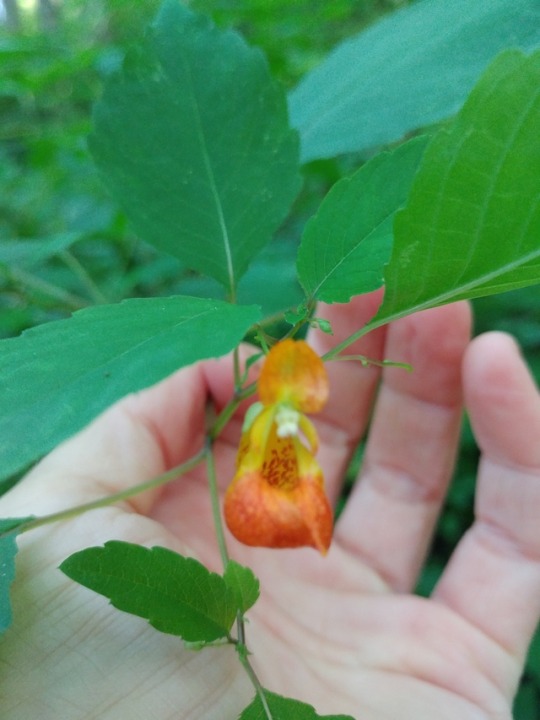

Yo, so there are TWO jewelweeds! Impatiens capensis, pictured here, and I. pallida, which has yellow flowers. This one is much more widespread, so it’s probably the one I usually see. I. pallida has, on average, maybe slightly wider/rounder leaves, but I really can’t tell them apart - maybe never would have realized there were two if they weren’t both blooming at the same time beside this spring.
#jewelweed#impatiens#impatiens capensis#impatiens pallida#plant id#native plants#roan highlands#wildflowers
23 notes
·
View notes
Text


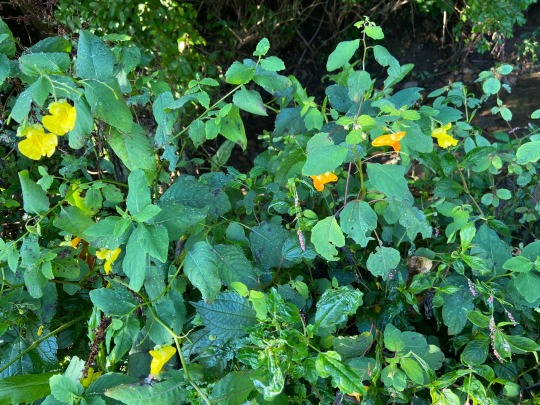
Orange and yellow jewelweed together.
103 notes
·
View notes
Text

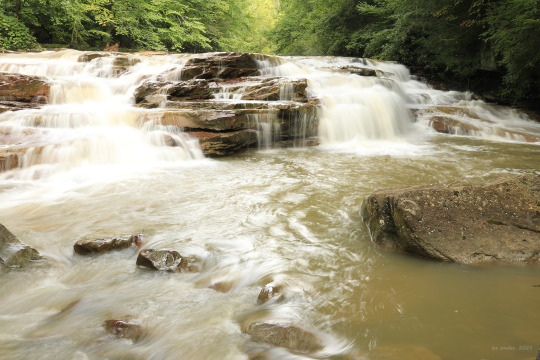


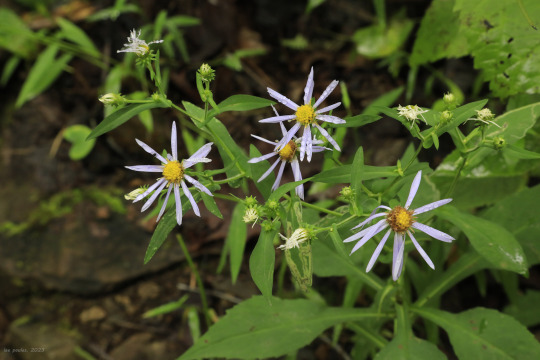
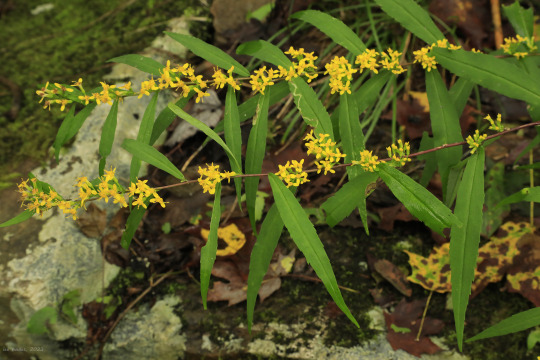
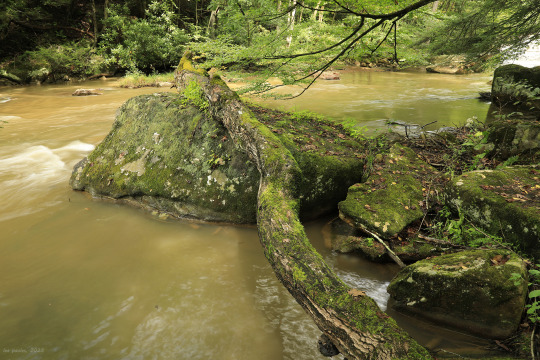
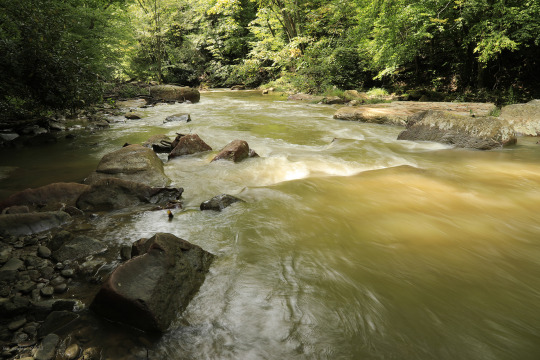
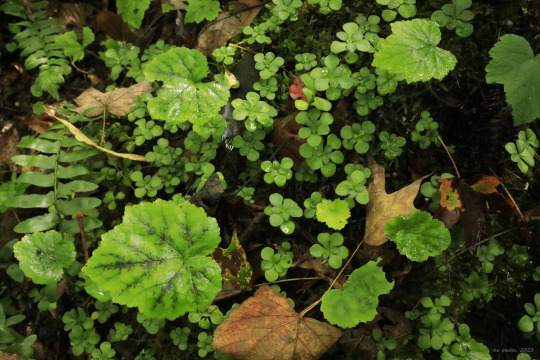

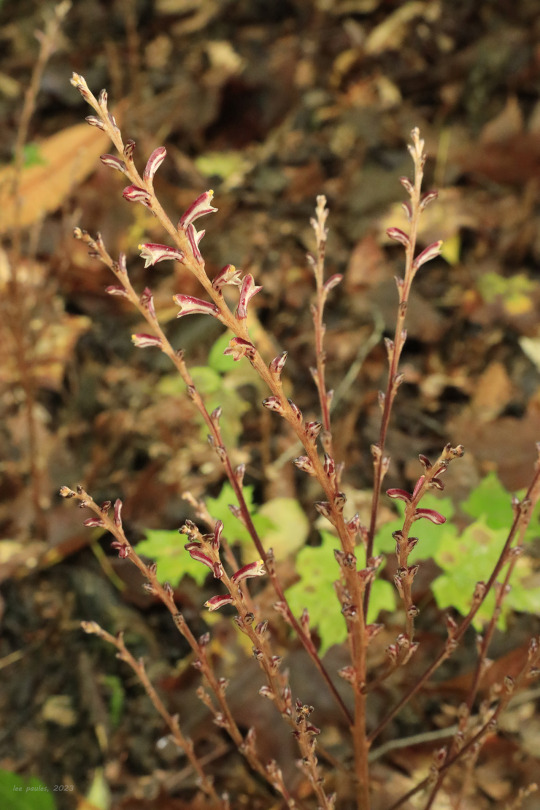
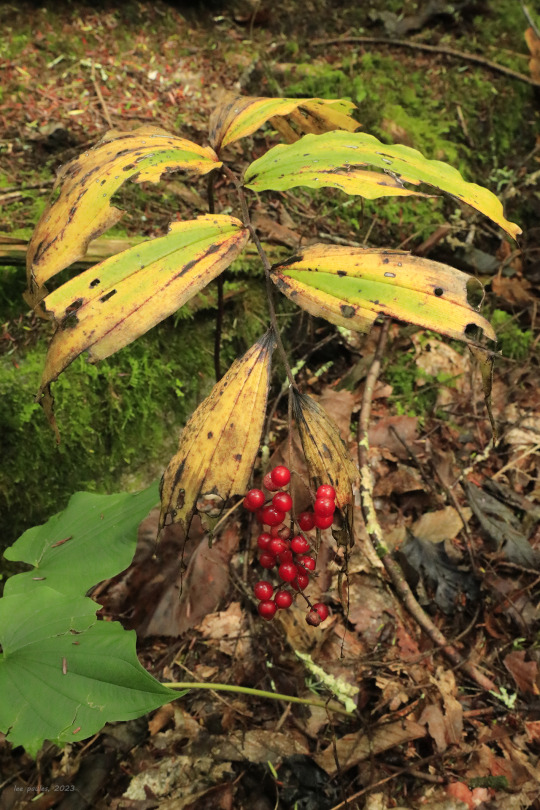
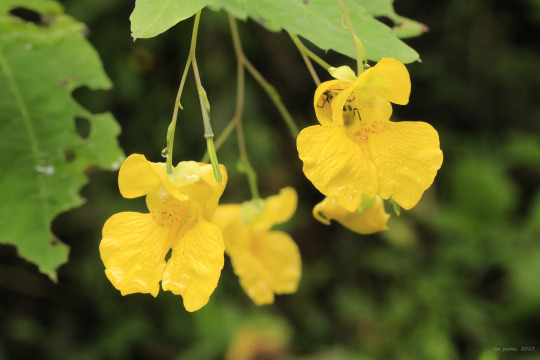
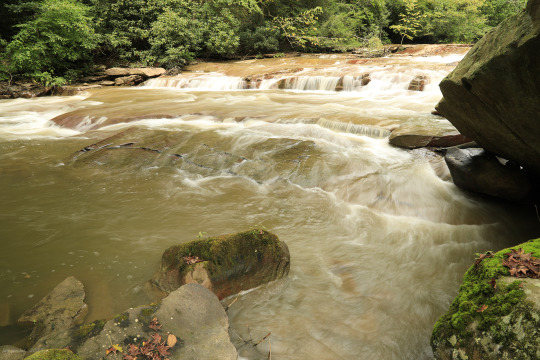

Despite its undignified name, Muddy Creek is a lovely mountain stream that normally runs fast and clear on its steep descent to Cheat River. But after a week of heavy rain in NC-WV, the stream looked a bit murky yesterday. Not even the sediment washing away from the mountains dims its beauty in my eyes. And the enchanting, moss-encrusted forest along its bank holds its own late summer treasures.
From top: great blue lobelia (Lobelia siphilitica), which pairs beautifully with cardinal flower to provide late summer color in a native wildflower garden; white wood aster (Eurybia divaricata), which is the most common of the shade-loving white asters in this area; crooked-stemmed aster (Symphyotrichum prenanthoides), also known as zigzag aster, whose clasping, spatula-shaped leaves distinguish it from big-leaf aster, another woods-loving aster with lavender flowers; blue-stemmed goldenrod (Solidago caesia), whose spreading, yellow-flowered stems provide stunning late-season color in a native wildflower garden; an intensely-green collage of moss, woodland stonecrop (Sedum ternatum), Christmas fern (Polystichum acrostichoides) and heartleaf foamflower (Tiarella cordifolia), which I am trying hard to reproduce in my own native wildflower shade garden; the shaggy-maned stem of Coker's Amanita (Amanita cokeri), one of the most impressive mushrooms of Appalachia's summer forests; beech-drops (Epifagus virginiana), a parasitic plant that grows and subsists on beach tree roots; the bright red berries of false Solomon's seal (Maianthemum racemosum); yellow jewelweed (Impatiens pallida), whose explosive seed pods give the plant its other common name, pale touch-me-not; and narrow-leaved tick-trefoil (Desmodium paniculatum), also known as panicled tick-trefoil, a late summer pea whose sticky seed pods commonly hitch rides on shoes and boots.
#appalachia#vandalia#west virginia#wildflowers#flora#summer#muddy creek#cheat river#preston county#fungi#coker's amanita#great blue lobelia#white wood aster#crooked-stemmed aster#zigzag aster#blue stemmed goldenrod#woodland stonecrop#christmas fern#heartleaf foamflower#beech-drops#beech drops#false solomon's seal#solomon's plume#yellow jewelweed#pale touch-me-not#narrow-leaved tick-trefoil#panicled tick-trefoil#falls#rapids#mountain stream
103 notes
·
View notes
Photo
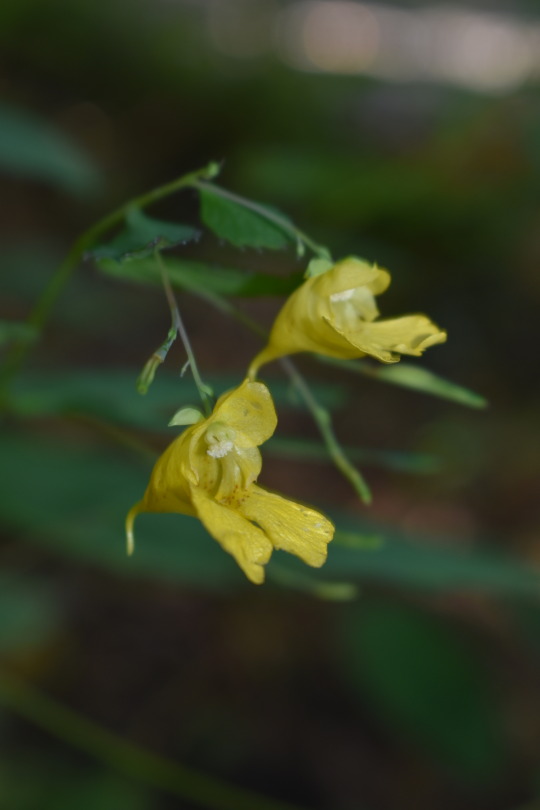
Pale Jewelweed
Impatiens pallida
Balsaminaceae
Photograph taken on September 30, 2022, at Scenic Caves Nature Adventures, The Blue Mountains, Ontario, Canada.
#wildflowers of southern ontario#Pale Jewelweed#jewelweed#touch me not#touch-me-not#pale touch me not#pale touch-me-not#flowers#wildflowers#flower#wildflower#nature#flora#yellow#Scenic Caves Nature Adventures#Scenic Caves#The Blue Mountains#Blue Mountains#Ontario#Canada#Impatiens pallida#Balsaminaceae#Impatiens
7 notes
·
View notes
Text


#cute little flowers from our walk today!#some kind of touch-me-not!#personally i thiiiiink its impatiens pallida but i could be wrong :3#meow
2 notes
·
View notes
Text
my area sucks because there are so many steep hills right up against the roadsides that are full of crazy and fun weeds (mostly non-native but also some pockets of native zones) but with zero shoulder to safely walk on so i am stuck.............. doing botany while driving
#there's one big hillside that is just the biggest swathe of pure impatiens capensis i have ever seen#or is it impatiens pallida i forget which one is the orange one#but it's just mounds and mounds of it#and then there's one hillside that is garbo rose of sharon but next to it is so much mullein and some escaped digitalis#and then of course.............. the hillsides with Joe#are the best
12 notes
·
View notes